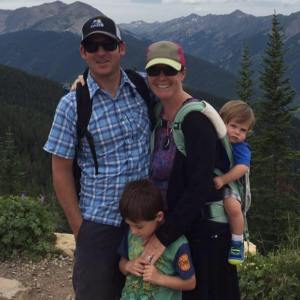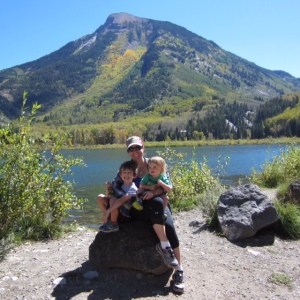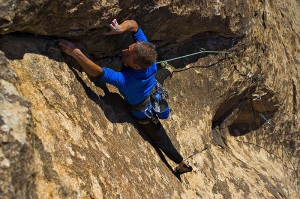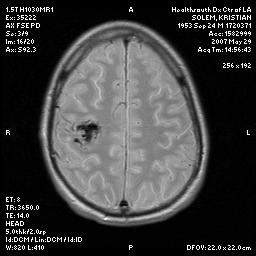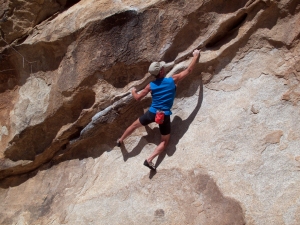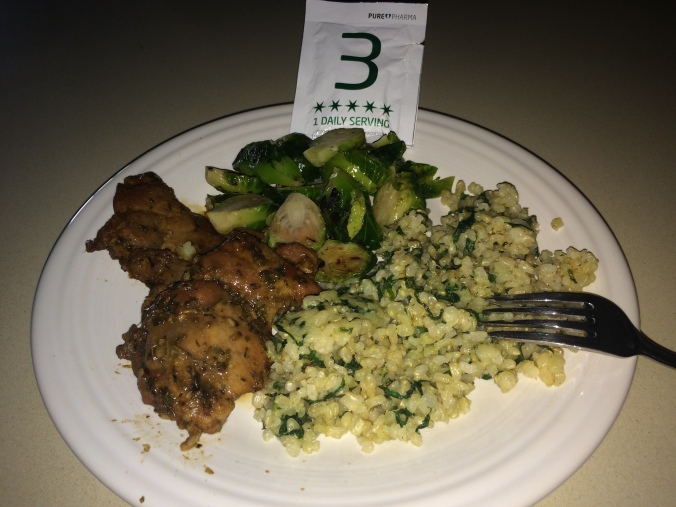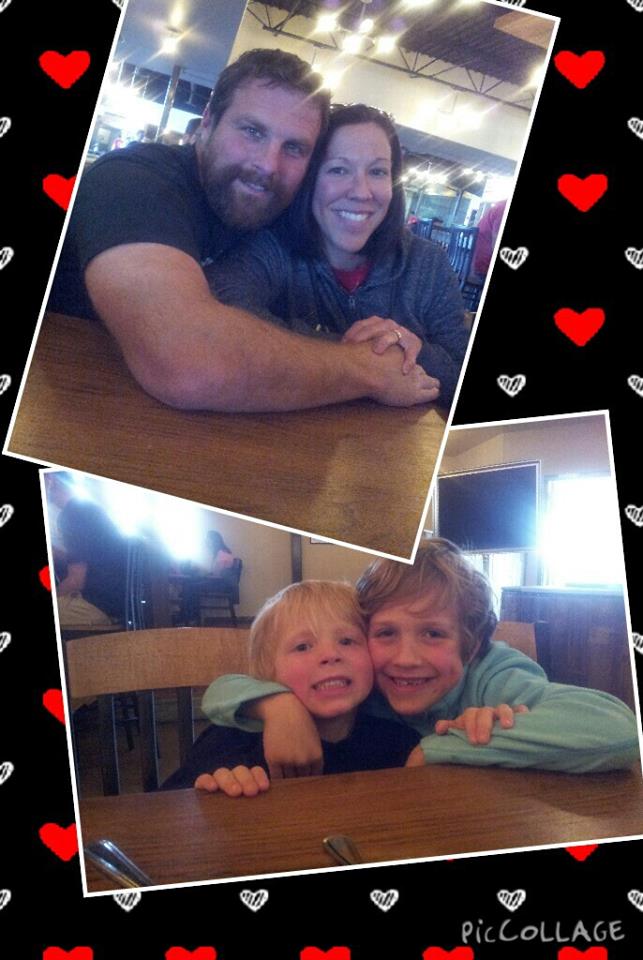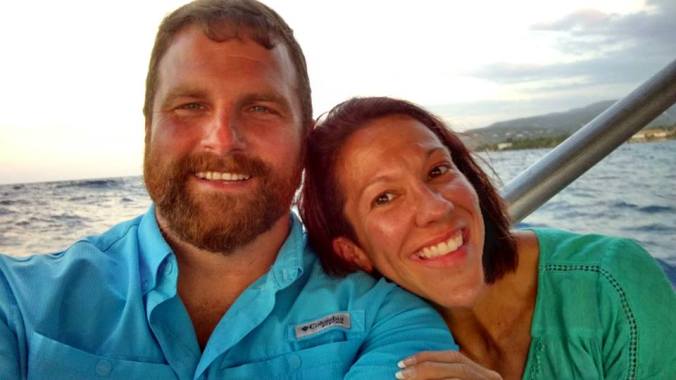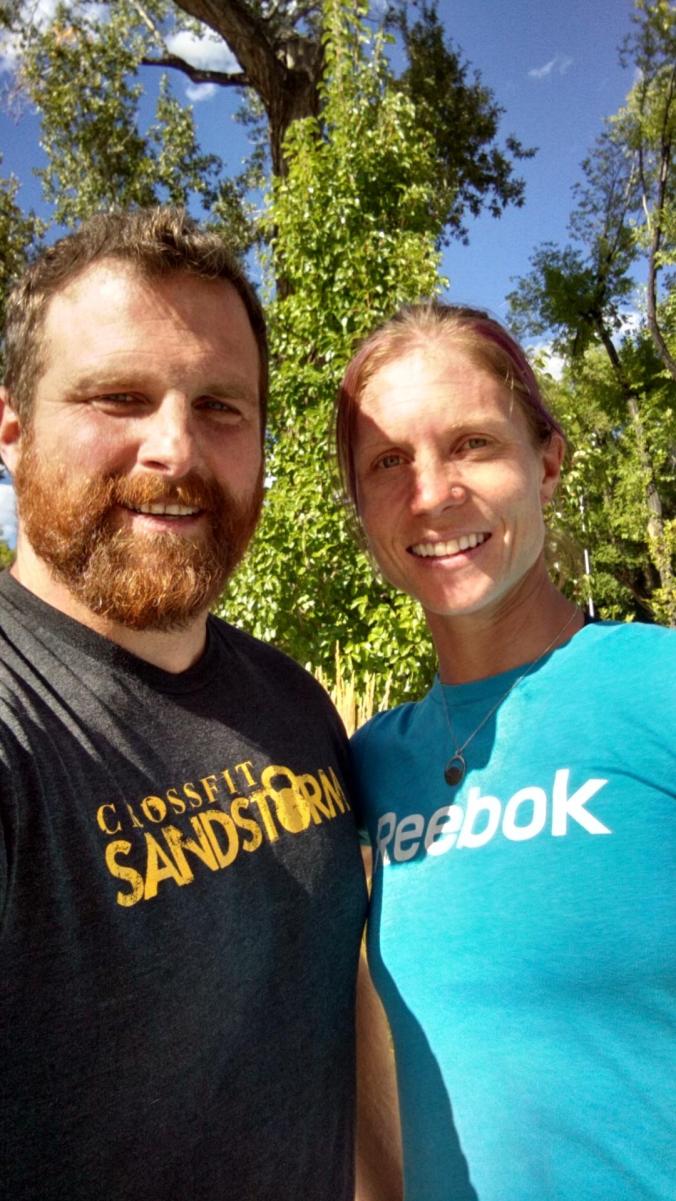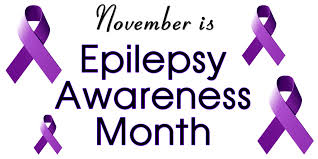I am a firm believer in that the Universe throws at us only what we can handle. Sometimes, in the moment, it may not seem like it, but things always work out. I believe that the way our adversities affect us greatly depend on the attitude we approach them with. We can dwell on the fact that we have been given a rough go for a moment, or we can learn from it, overcome it and be a bigger and better person for it. We are always exactly where we are supposed to be, doing the things we are supposed to be doing and experiencing the things we are supposed to be experiencing. Often we may not immediately know the reason things are the way they are (or ever at all), but we must trust that these things are happening either to teach us lessons, to help us grow our character, or to help others do the same.
With that said, people that are dealt the hand of epilepsy are some of the most courageous people I have ever met. There are these thunderclouds constantly living in our brain. For some, they may explode into storms every second. For some, every day or so. For some, every year. For some, every 10 years. And for some, they are dormant. However, in all of these cases (even those with “control”) we never actually know if or when the next storm will hit. However, when they do hit, each one of these people continue to fight and overcome another storm to live the next moment as though it is their best. Below are some amazingly touching stories of incredibly strong, courageous people living with epilepsy every day of their life. Please take a moment to read and learn from these strong souls. I sure have!
“I was diagnosis at 3 with epilepsy. I went from neurologist to neurologist. Medications didn’t work, some of them even made me a zombie, or do crazy things like run outside completely naked. At 5 years old I had the brain of a 2 year old. I then went to John Hopkins Hospital and the neurologist John Freeman put me on the ketogenic diet. I was on that for 2 years and it worked great. I went about 5 to 7ish years without seizures until the end of 5th grade and started having them again. In 6th grade we tried the atkins diet which didn’t help that much, plus by them I had been able to eat regular food and it was hard to follow. I even snuck chocolate chips sometimes. I was put on trileptal, and other medications as well. I still had seizures but it wasn’t too bad to keep me from living a normal life. I went to school and did things with friends. I have never been allowed to drive. A year ago I got the vagal nerve simulator and I still take medications as well. Most of the time when I have my seizures I stare off into space and can’t always communicate. I sometimes do jerk my arm or head. It kind of depends on the level of how extreme my seizure is whether I am able to communicate and how tired I am afterwards and how moody I am afterwards.Not getting enough sleep has always been a major trigger for me. I have had about maybe 6 grandmal seizures in my lifetime, but that is not what I am diagnosised with. I am 21 now, most of the time having seizures doesn’t bother me. I did get a part time job though about a month ago and I’m finding that maybe a job, school, and all the other little things may be a little to much for my body to handle seizure wise.” ~Regan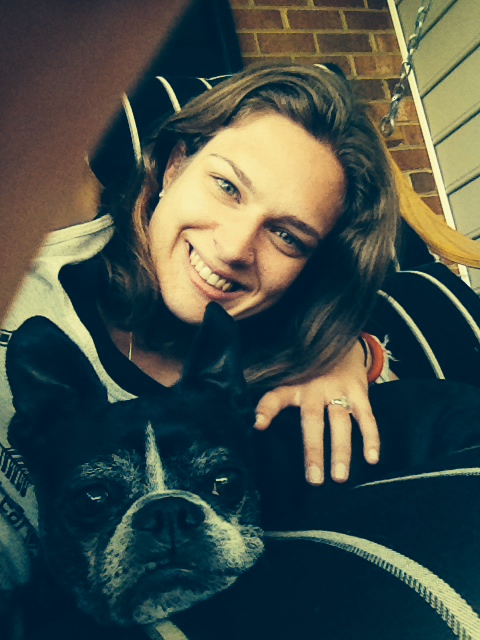
“My name is Kelsey and I have been living with epilepsy for 10 years. I was diagnosed after my first grand mal seizure at the tender age of 12. The teenage years are hard enough, but having been diagnosed with such a disease was pretty hard, to be honest.
I was raised by a powerlifting father and compassionate mother, so I was truly blessed with such a support group to get me through the ups and downs the disease brought. Unfortunately, it wasn’t until my freshman year of high school that we found a medication that really controlled my seizures. I feel truly blessed that I had an amazing neurologist and parents who lifted me up during such trying times. I grew up wanting to be a Navy SEAL and of course that couldn’t happen once I was diagnosed, so I felt pretty lost for several years on what my “purpose” was.
Luckily, my intense love of sports and competition kept me working on another goal: college softball. I ended up accepting a scholarship to play college softball just 5 years later.
Talking to people about my disease was impossible. When I did I got choked up almost every single time because I felt like epilepsy was such a burden and truly believed it ruined my life. This way of thinking pretty much controlled my life until about a year ago when I decided we all have a choice in life: either work with what you got or just sit and dwell on your weaknesses. The truth is, we all have weaknesses and problems. Some are bigger than others, but that’s when we choose to be strong. The importance of physical strength is something that was instilled in me at a very young age, but it was hard to wrap my mind around mental strength.
Sure, there are days where I feel like this disease has gotten the best of me. I’m currently in my last year of college and I can say that I could have probably done a lot more or a lot better if I hadn’t been given this disease. But that’s when I look up and tell myself that I am pretty damned blessed to have all that I have in my life right now. I have the amazing ability to be able to go to class everyday and learn about things that I love. There are so many kids out there who cannot get out of bed because of epilepsy. There are so many wonderful kids who will never get to play or run whenever they want because of epilepsy. I just want those kids to know they are what keep me going and motivated. I also want the world to know about this disease and the effects it has on so many amazing people in this world.” ~Kelsey
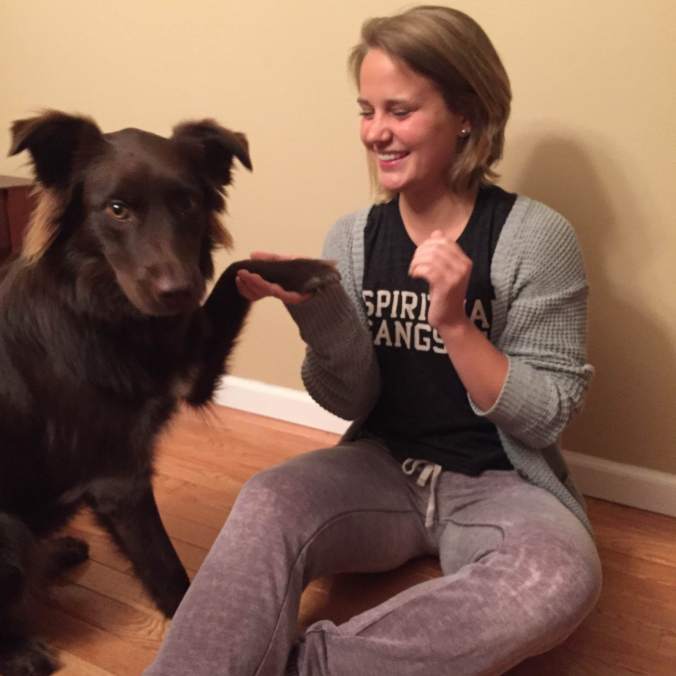
“My experience with epilepsy begins long before I ever actually had a seizure. I remember sitting in our living room as a child terrified out of my mind as my Dad sat in his chair having a seizure on a Sunday morning as he was polishing all our shoes before we went to church. My Mom was rock solid, calling the paramedics, comforting all five of us children, taking care of my Dad, and maintaining her composure throughout. I had heard about our family’s history, but it never dawned on me that it might affect me so personally.
Then one day when I was eighteen I fell asleep in my high school English class and when I woke up I was on a gurney in an emergency room and I had lost the last eight hours of my life. I remember thinking, how did I get here? What happened? Why is my head hurting so badly? Why am I hurting so badly? That’s how it started for me. From there I went through all the beginning stages of diagnosis, testing, and drug trials. Some medicines worked to control some seizures but not all. Some medicines didn’t control any seizures and made me feel horrible, and some medicines gave me such bad reactions that I ended up in the emergency room from allergic reactions. The first few years were the worst until we found a medicine that controlled ‘most’ seizures and had the least side effects, which by no means meant there were few. I felt doped most of the time, off balance often, and slurred speech and bleeding gums were the best the doctors could offer me. Ok, I’ll take it. The alternative, I had learned, was much worse.
The type of epilepsy I have, gives me little warning before I feel a wave of darkness wash over me, a knocking in my ears, and then its lights out. When I come to, I’m usually surrounded by paramedics or strangers who are trying to help, but for whatever reason I am scared to death. I lose time, every time, and that in itself is a scary feeling.
Eventually, it seemed that I reached a time in life when my epilepsy leveled out, I was only having a few seizures a year, which is pretty well controlled. So we decided to start our family. Six years later, by the grace of God, we had three beautiful, healthy children. They are 17, 15 and 12 now and so far none have shown any signs of having epilepsy. We are so thankful. I do however have a nephew, nearly 13, who has recently been diagnosed with epilepsy. Kyle’s (aka Kylie Wylie) seizures manifest as stomach cramps that last sometimes as long as 24 hours until he finally vomits and then finds relief. At first he was misdiagnosed with a gastrointestinal disorder. When all attempts at treatment failed he ended up at a children’s hospital where he was finally properly diagnosed with epilepsy.
In the last few years I have experienced a resurgence in the activity level of my epilepsy. It responds very little to medication and the seizures have very pronounced ‘triggers’; like fatigue, and heat, loud noises and flashes of light. I have to be watchful and careful these days of my surroundings. I can’t take a bath or exercise alone. In fact I can’t be alone much at all. Last summer I had a Vagus Nerve Stimulator implanted, which is supposed to help control the intensity and frequency at which my seizures happen. So far, so good.
I am a fighter. I am a mother, a wife, a Christian, a daughter, a sister, a coach, and a friend. I am an epileptic. Many people are. I am surrounded by a loving supportive community of people who know me and fight for me and with me. Epilepsy is something I have learned to live with but it doesn’t define who I am or what I can do. ‘I can do all things through Christ who strengthens me,’ Philippians 4:13.
It is important to bring awareness to epilepsy so that every person out there who struggles like I do has an advocate, a doctor, a choice, a support group, and someone who knows how to help them when the moment comes that they can’t help themselves. Love to all.” ~Leah
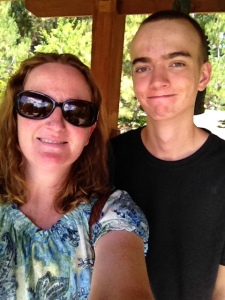
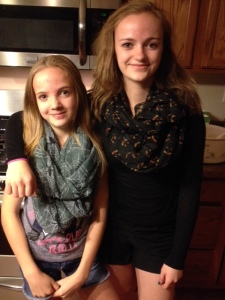

“I don’t remember a time in my life where Epilepsy didn’t affect me – whether it was to do with my school work, my comprehension or the day my brain regained that inner camera focus again, this medical condition/disease has affected me in some way.
There’s been a huge list of medications I’ve been on – quite a few I don’t remember taking; but my Mum does – and it was most of them that we tried out and they didn’t work. Either they didn’t stop the seizures or the side-effects were so bad my family noticed I that I just wasn’t functioning to be around the rest of the Human Race.
But I was born with this. I wasn’t in some horrible car accident, acquired a sporting injury. Nobody hit me in the head and I woke up in hospital a few weeks later with it… it’s in my DNA – my Epilespy is genetic. I can’t have children because of it. I don’t’ want my children to have this horrible condition and have to watch them become the guinea pigs of doctors and go through the same crap I did growing up: the blood tests, the specialists, the pain of taking medications that taste like old socks and make your nose bleed if your body temperature rises too high and you don’t sweat.
Couple this with me dying aged 2 and you’ve got my life of trying to rewire my brain over the last 35 years. A large piece of my brain doesn’t work – and it’s where I’d normally work out maths, where my comprehension would be hard at work understanding things, where everything would ‘come together’ in a plan for things in life, in anything I’d be doing in life. Things I do in my life take twice as long to do because I have to think it out more – it’s more effort for me to get things done.
I’ve also had tests done to see if I could get my brain operated on to ‘fix’ this in Melbourne. I was there in one of the biggest and best private hospitals for 2 weeks, kept awake in a hot room (to trigger a seizure) and nothing much happened. Actually I nearly died while I was there – a few times. The first time was when I saw a huge Angelic figure at the end of my bed and I completely freaked out and tried to climb the walls. At this point the professor who was looking after me personally came to the hospital and told me to go to sleep… and I was thankful he said that – anything to get away from that thing at the end of the bed.
The second time was when they moved me from the testing room, removed all the EEG electrodes I had had on my head for the week and told me that I wasn’t a candidate and put me into another room. They just shoved me back onto my medications without weaning me onto them – like they were supposed to over the next week or two, then send me home. When I started showing signs of problems, they gave me a Valium and it overdosed me. This happened a couple of times before I became violently ill and was physically sick at the hotel Mum and Dad were staying at. I remember being sick 4 times after seeing four of everything around me, then I blacked out – I lost 3 days. To this day, I don’t remember anything after throwing up into a saucepan in that hotel; just that I lost 2 dress sizes and Mum could physically carry me to the bathroom when I tried to walk there on my own. It took another three days to get me onto a plane in a wheelchair home because I was in such a bad way. It took so long for me to come back from that. But we found a great Neurologist who told me straight away that I was on the wrong medications, they were all too strong and that my Epilepsy was the worse type (Tonic Clonic Partial Seizures) and yet I only need the tiniest amount of Epilum, Tegritol and Topamax to control it… amazing, right?
However, as I’ve aged, my brain’s rewiring has made it easier for me to keep those highways open long enough to learn about what I need to do each day. From going shopping to do my laundry, I can easily do my everyday stuff around the place. But if I have to learn something new, it’s the most difficult thing around. I’m constantly read instructions over and over to get it right; and I hate that – but I’m a stickler to get things right, it’s just how I am.
Over the last few years, I’ve been allowed to drive a car again – yep, I was permitted to drive a car aged 19 and by the age of 27 I had to give it up until I was stablised. This sucked big-time, but it was safer for everyone on the roads; including me. In August 2011, I sold my first car to the wreckers for $150 and said goodbye to it then came home and cried because I never thought I’d drive again. It was a very sad day for me to not see my little red car again; and yet I’d been stabilized since 24th, April 2004.
In 2013, Mum and Dad were going overseas again and they were dropping Mum’s Pajero to my place for me to mind (as usual) but this time they said I could drive it… I had to ask them to repeat the last part! About 2 days after they left, I spent 2 hours talking myself into driving that gas-guzzler… and once I got that thing outside the gate of my townhouse complex and onto the road, I didn’t look back!
I started remodeling my front garden, then my back garden, cleaning out my house, working on more books (I’m a writer) and my shopping took only 4 hours to do instead of 6 hours due to me having a car at my disposal. I also opened my hobby business – Lynda’s Crafty Pegs – and started working at boutique and craft markets on the weekends. This meant I had to get up at 5am some Sundays and get my butt out there in the freezing cold, but it was good to get myself working at places where I’d be away from my house and networking with other creative people like myself.
And last year, Dad bought me a car for my 41st Birthday! It was so cool to be able to drive to the coast on my own for a few days to visit my folks, then come home when I wanted to by car; instead of catching a bus – which took 6 hours to get up here.
I have found that life is only getting better and better. I eat a very healthy diet, have cut out all types of junk food and takeaway food and make all my meals at home from scratch. I’m vegetarian, don’t smoke or drink alcohol and love gardening. I’m the biggest book collector in my family and have dedicated one room of my townhouse to a library of books which either amazes or stuns people… either way, when my friends have asked me about a book, I normally know if I have it and where it might be in the room. I love to recondition and refurbish old furniture and have a lovely old 1970’s chair in my library where I hide here and kick back and read whenever I want to.
Now I’m stabilized completely, I’m looking more into the future of wanting to travel more. However I do find making friends, keeping friends, getting a job and having relationships some of the most difficult things to do – even if I look and act normal, it’s the medication that always seem to bug people. I just have to remember that it’s them with the problem and not me. I’m already okay with myself just the way I am… but then, I’m also still working on my life, I’m still relatively young and there’s still a long way to go with this medical condition to understand it better.” ~Lynda

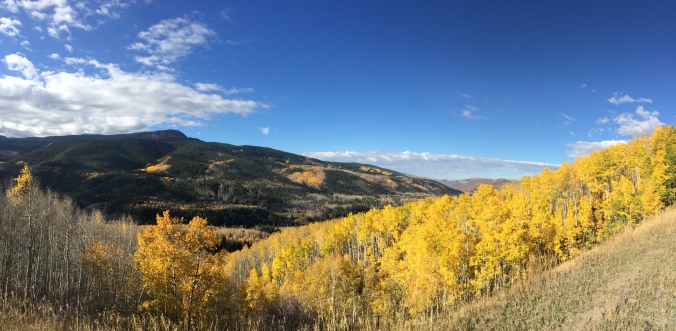
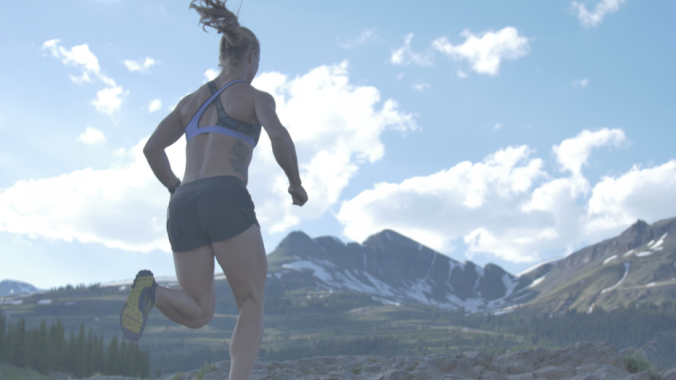
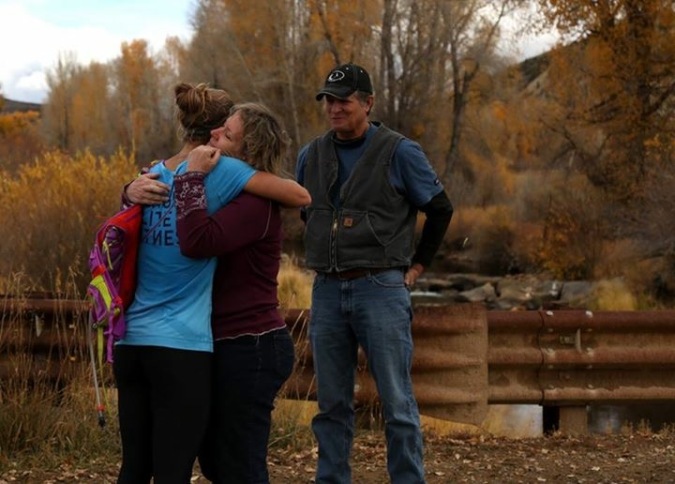
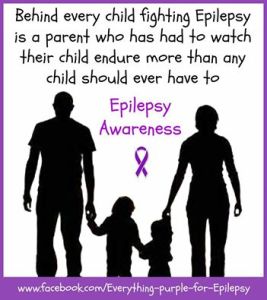 When Jenny asked me recently if I would blog on being the mother of a child with epilepsy, I agreed. But as I sit with my hands on the keyboard and allow my thoughts return to those days, raw emotions I’ve not felt in years begin to resurface. I don’t want to go there, to the memories of fear, confusion, frustration, and sadness. But if she can run 500 miles in only 31 days over some of Colorado’s highest peaks, then I can do this.
When Jenny asked me recently if I would blog on being the mother of a child with epilepsy, I agreed. But as I sit with my hands on the keyboard and allow my thoughts return to those days, raw emotions I’ve not felt in years begin to resurface. I don’t want to go there, to the memories of fear, confusion, frustration, and sadness. But if she can run 500 miles in only 31 days over some of Colorado’s highest peaks, then I can do this.
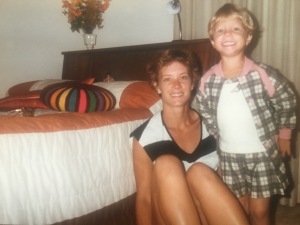 Through it all, Jen was the happiest, smiling-est child you’d ever hope to come across, and unless the meds were interfering, she was a curious, loving, and enthusiastic kid. That’s what I hung on to, her determination to enjoy life. Her demeanor and zest reinforced our intention to treat Jenny not as “normal” child, but as an extraordinary child, which is exactly what she was and still is. Her physicality was evident even as a little one as she hiked with us into high mountain lakes, refusing to be carried. Her compassion for others is second to none. She has always enthralled and amazed me. Her abilities, physically, intellectually, and emotionally, were evident and there was just no option to suppress her enthusiasm. Therefore, she never knew how frightened her dad and I were, wondering what her future might hold.
Through it all, Jen was the happiest, smiling-est child you’d ever hope to come across, and unless the meds were interfering, she was a curious, loving, and enthusiastic kid. That’s what I hung on to, her determination to enjoy life. Her demeanor and zest reinforced our intention to treat Jenny not as “normal” child, but as an extraordinary child, which is exactly what she was and still is. Her physicality was evident even as a little one as she hiked with us into high mountain lakes, refusing to be carried. Her compassion for others is second to none. She has always enthralled and amazed me. Her abilities, physically, intellectually, and emotionally, were evident and there was just no option to suppress her enthusiasm. Therefore, she never knew how frightened her dad and I were, wondering what her future might hold.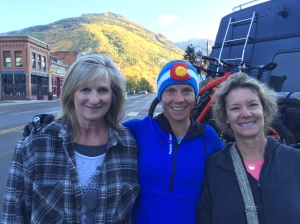

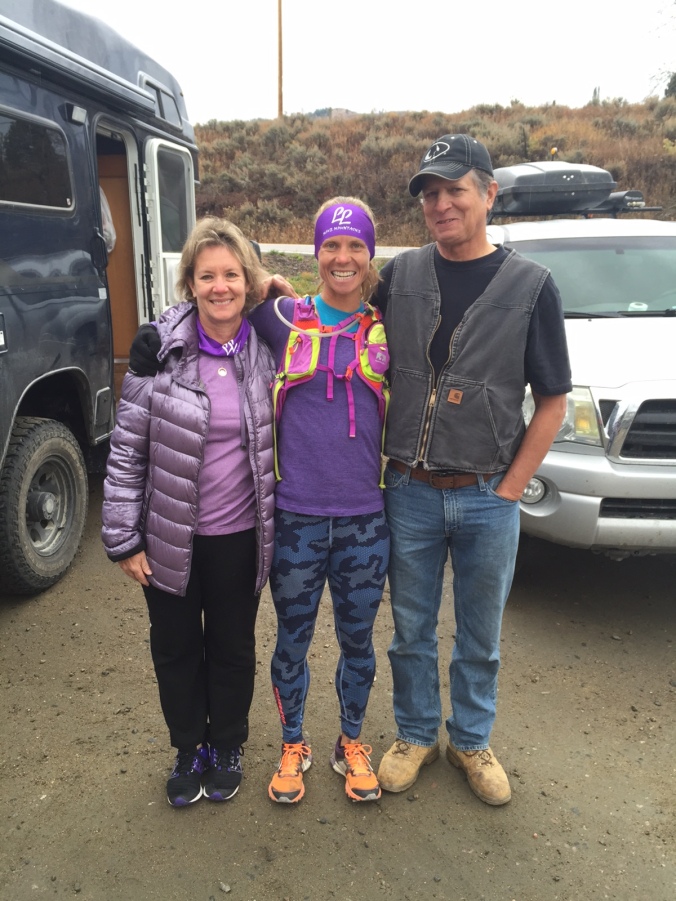
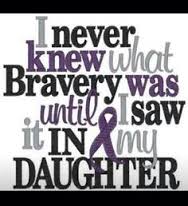
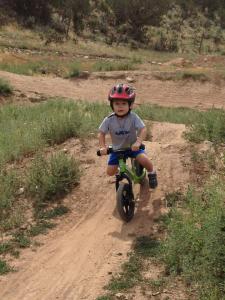

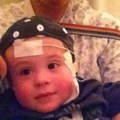 Scared and anxious, we agreed to all the recommended testing and hoped we’d have a plan to stop the seizures. After an MRI and multi-day EEG there was no evidence of an abnormality so Sam was prescribed medication and we were told he would most likely outgrow the seizures. Sam was still our sweet, happy, active boy and the seizures rarely slowed him down.
Scared and anxious, we agreed to all the recommended testing and hoped we’d have a plan to stop the seizures. After an MRI and multi-day EEG there was no evidence of an abnormality so Sam was prescribed medication and we were told he would most likely outgrow the seizures. Sam was still our sweet, happy, active boy and the seizures rarely slowed him down.  We were told he may have significant developmental delays and that the epileptic spasms would be very difficult to treat. We would have to make decisions about adding medication(s) and balancing the side effects with his quality of life. It was also recommended that we start speech and OT therapies to help his development. We were then referred to Children’s Hospital in Denver for his future treatment. This was a very challenging time for us. The uncontrolled seizures were taking a toll on Sam. I was also working full time and being away from Sam was very tough. We were very fortunate that Sam was in a quality day care program and they cared for him like he was their own.
We were told he may have significant developmental delays and that the epileptic spasms would be very difficult to treat. We would have to make decisions about adding medication(s) and balancing the side effects with his quality of life. It was also recommended that we start speech and OT therapies to help his development. We were then referred to Children’s Hospital in Denver for his future treatment. This was a very challenging time for us. The uncontrolled seizures were taking a toll on Sam. I was also working full time and being away from Sam was very tough. We were very fortunate that Sam was in a quality day care program and they cared for him like he was their own. 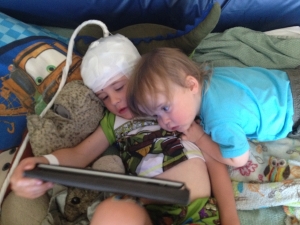
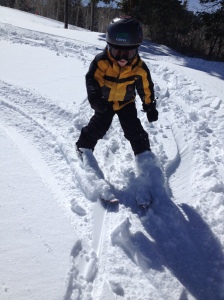
 This Fall, Sam started kindergarten. He has an IEP (Individual Education Plan) in school to help with his learning challenges. He has trouble with his attention, short term memory, speech, and handwriting. At this point he loves school and we hope to keep him successful and happy in school.
This Fall, Sam started kindergarten. He has an IEP (Individual Education Plan) in school to help with his learning challenges. He has trouble with his attention, short term memory, speech, and handwriting. At this point he loves school and we hope to keep him successful and happy in school. 